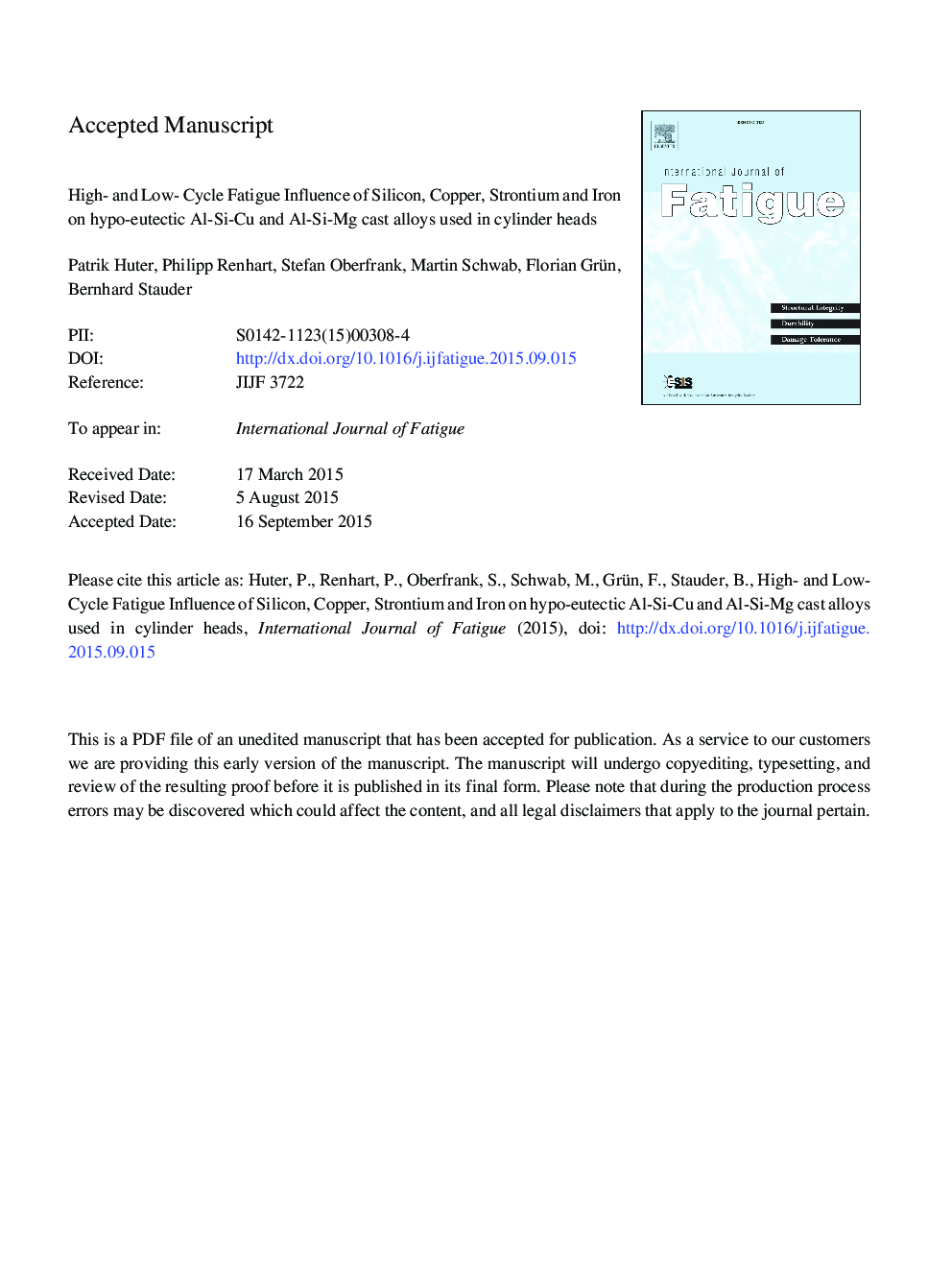| Article ID | Journal | Published Year | Pages | File Type |
|---|---|---|---|---|
| 7171867 | International Journal of Fatigue | 2016 | 25 Pages |
Abstract
The observations clearly identified the effects of the individual alloying elements both under low- and high-cycle fatigue. The crack propagation speed and the crack paths were majorly influenced by the eutectic silicon. Additional, the precipitation hardening due to copper affected significantly the fatigue endurance, too. In high plasticities the silicon's influence got almost lost and only the matrix strength was crucial. Thus, increased fatigue strength in high loaded LCF regimes was observed for alloys with less copper content, thus higher ductility. By contrast, improved HCF and low loaded LCF endurance was only achieved when the matrix strength was increased by copper's precipitation hardening. Crack branching and deflections strongly influenced the microstructural damage of the ductile AlSi7Mg(Sr) and hence, gained its fatigue strength. Iron phases could not identified as harmful inclusions, since the phases were similar in size of other hard phase elements like the other primary intermetallic phases like Al2Cu and β-Si phases under notch stress aspects, by the well defined solidification process in the test section. Because the crack nucleation mainly occurred on Si particles, strontium as a refinement agent influenced the early crack onset and accordingly the fatigue in total. Thus, the AlSi6Cu4(Sr) had increased lifetimes compared to AlSi6Cu4 both in HCF and LCF. Further, the presented results provide a modification of the Manson-Coffin approach to describe the relationship between plastic strain and lifetime, valid for all proposed alloys with only one set of parameters. Thus, it was possible to perform the fatigue calculation with a reduced range of scatter.
Related Topics
Physical Sciences and Engineering
Engineering
Mechanical Engineering
Authors
Patrik Huter, Philipp Renhart, Stefan Oberfrank, Martin Schwab, Florian Grün, Bernhard Stauder,
